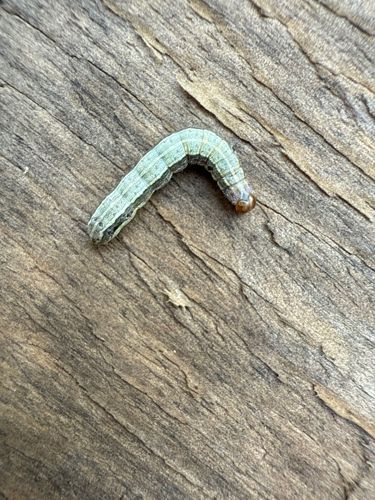Cabbage Looper
Scientific Name: Trichoplusia ni
Order & Family: Lepidoptera (Order), Noctuidae (Family)
Size: Larvae (caterpillars) typically grow 3-4 cm (1.2-1.6 inches) in length. Adult moths have a wingspan of 3-4 cm (1.2-1.6 inches).

Natural Habitat
Agricultural fields, gardens, and areas where host plants are abundant. They are found worldwide, particularly in temperate and tropical regions.
Diet & Feeding
Polyphagous herbivore, feeding on a wide variety of plants, including cabbage, broccoli, cauliflower, lettuce, peas, celery, tomatoes, and many other vegetables and ornamental plants.
Behavior Patterns
Caterpillars are primarily active feeders, defoliating plants. They typically move with a looping motion, drawing their rear prolegs forward to meet the front true legs, then extending the front part of their body. They spend most of their larval stage feeding and growing, molting several times. Upon reaching maturity, they pupate, often in the soil or on their host plant, before emerging as a moth.
Risks & Benefits
Potential Risks: Significant agricultural pest, causing considerable damage to a wide range of vegetable crops by feeding on leaves, leading to reduced yield and marketability. Benefits: As a common insect, it serves as a food source for various predators (birds, parasitic wasps, predatory insects) and plays a role in the food chain. The adult moths are pollinators, though not highly specialized.
Identified on: 8/11/2025